Finding balance and umami in the Olympic National Forest
Chef Melissa King journeys through an old-growth forest with National Geographic Explorer Korena Mafune to forage mushrooms and create a dish inspired by the spirit of the place.
Nature is in a constant state of renewal. Its cycles of birth and decay ignite our senses and pique our curiosity season after season. It can make us feel grounded, balanced, and for creative minds like Melissa King, inspired.
In the five-part content series Tasting Wild, King―an acclaimed chef, entrepreneur, and winner of Top Chef All-Stars: Los Angeles Season 17―teams up with National Geographic explorers and experts to source inspiration and ingredients by traveling to some of the most remote areas in the United States. Taking the first-ever MAZDA CX-50 for the journey, King goes off-road to push her boundaries, connect with the land, and fuel her creativity.
King is based in San Francisco and often merges modern California cuisine with Asian flavors in honor of her Asian-American heritage. While she loves being in the kitchen, King regularly turns to the outdoors to spark her creativity.
Nature’s always where I find the most inspiration in my cooking.Melissa King, Chef
On this leg of her journey with National Geographic, King heads to an old-growth forest near Lake Quinault in Washington’s Olympic National Forest. The area is home to the only temperate rainforest in the continental United States.
Rainforests cover only six percent of the Earth but are essential to life on our planet. They balance the world’s climate by absorbing carbon dioxide and releasing the oxygen we breathe. Rainforests are also home to millions of plant and fungal species—including many that King uses in her cooking.
King parks the CX-50 at the edge of the old-growth forest to meet National Geographic Explorer and fungal ecologist Korena Mafune. Mafune studies the interactions between plants, fungi, and soil systems and spends much of her time in forests like this one.
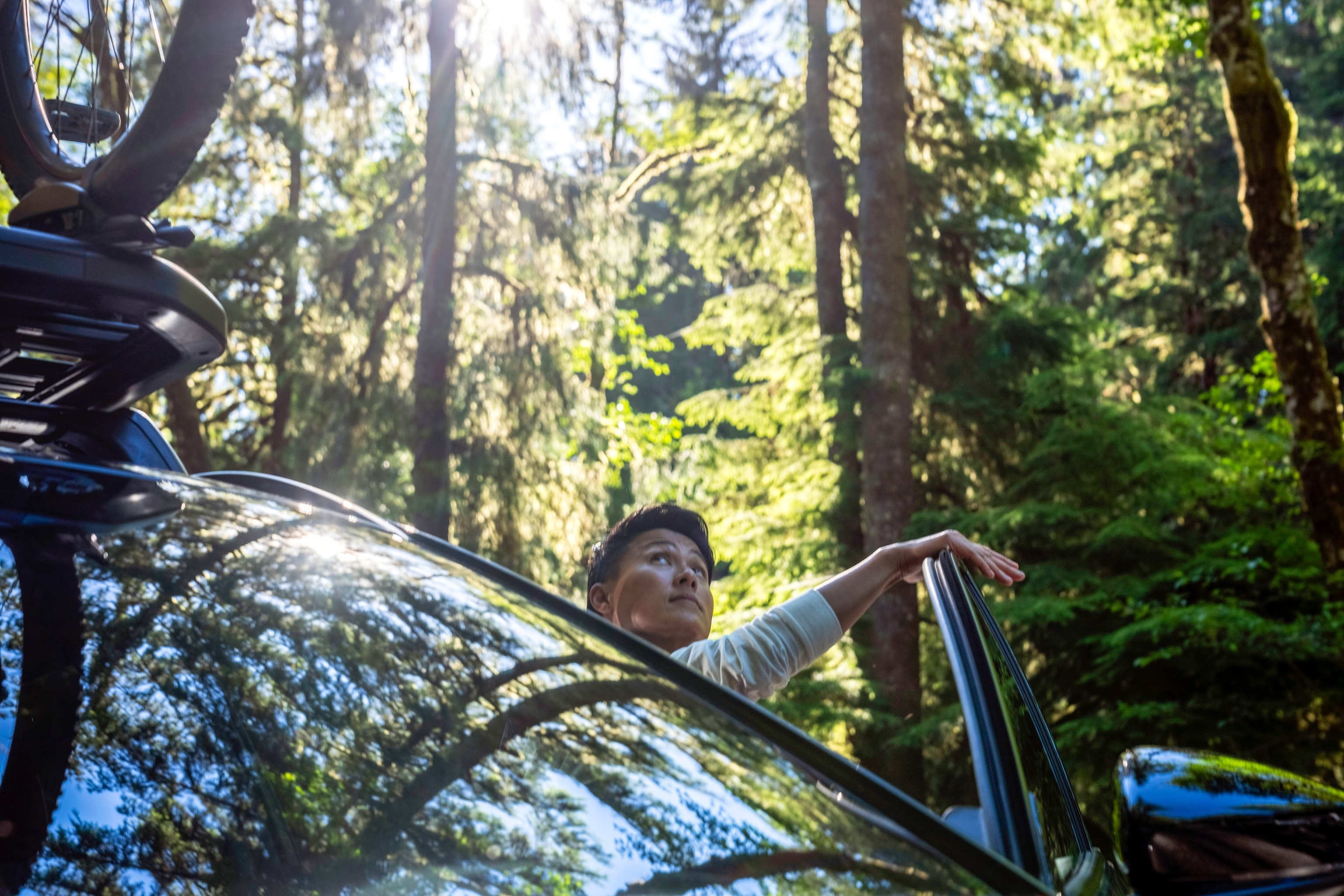
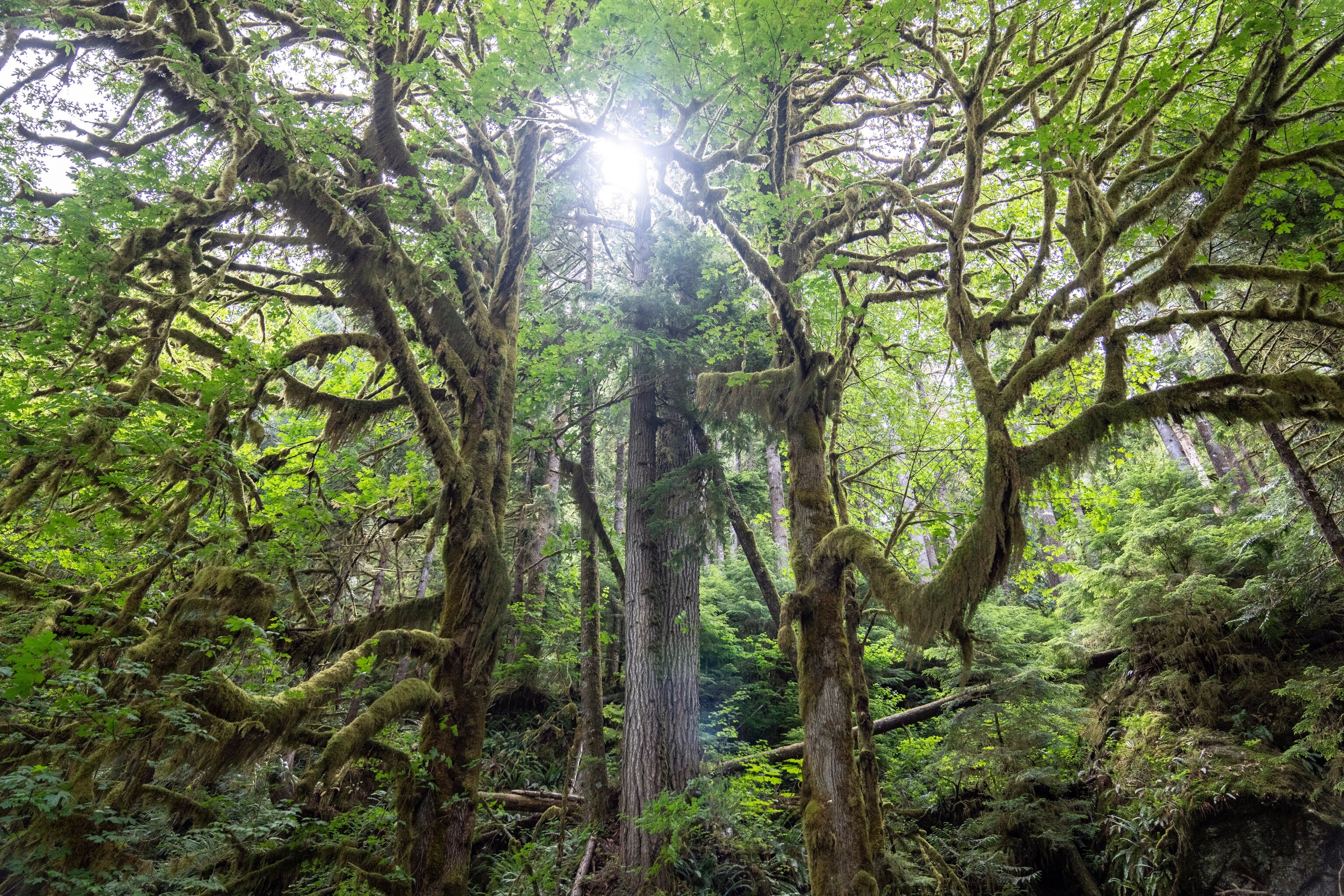
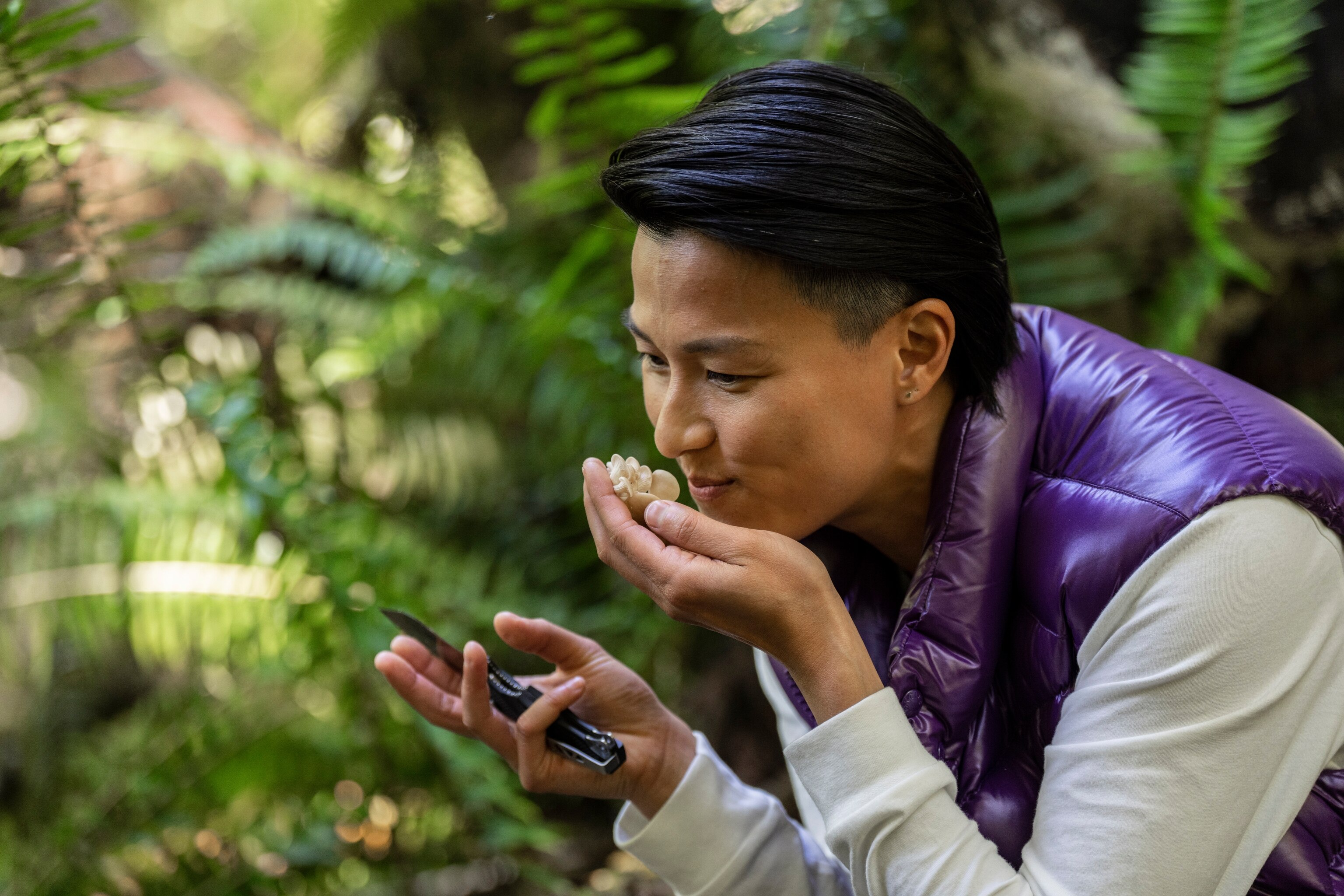
As King and Mafune begin their hike, they pass under towering spruce, fir, and hemlock trees covered in majestic hanging moss. The trees have been here for 150 to well over 500 years. They trek over roots and rock, and Mafune reveals to King that there are fungal organisms all around them. Mafune explains that mushrooms in particular fulfill many vital roles in the forest. “They provide a balance in the ecosystem,” she says.
For King, mushrooms represent balance in the kitchen. They’re one of the main sources of umami, the fifth primary taste, along with sweet, sour, salty, and bitter. Umami is a Japanese word that loosely translates to “savoriness.”
King also loves the versatility of the ingredient. “You can cook [mushrooms] fresh. You can use them dried. You can turn them into powders and infuse them into broths. They add a boost of flavor to your dishes,” she says.
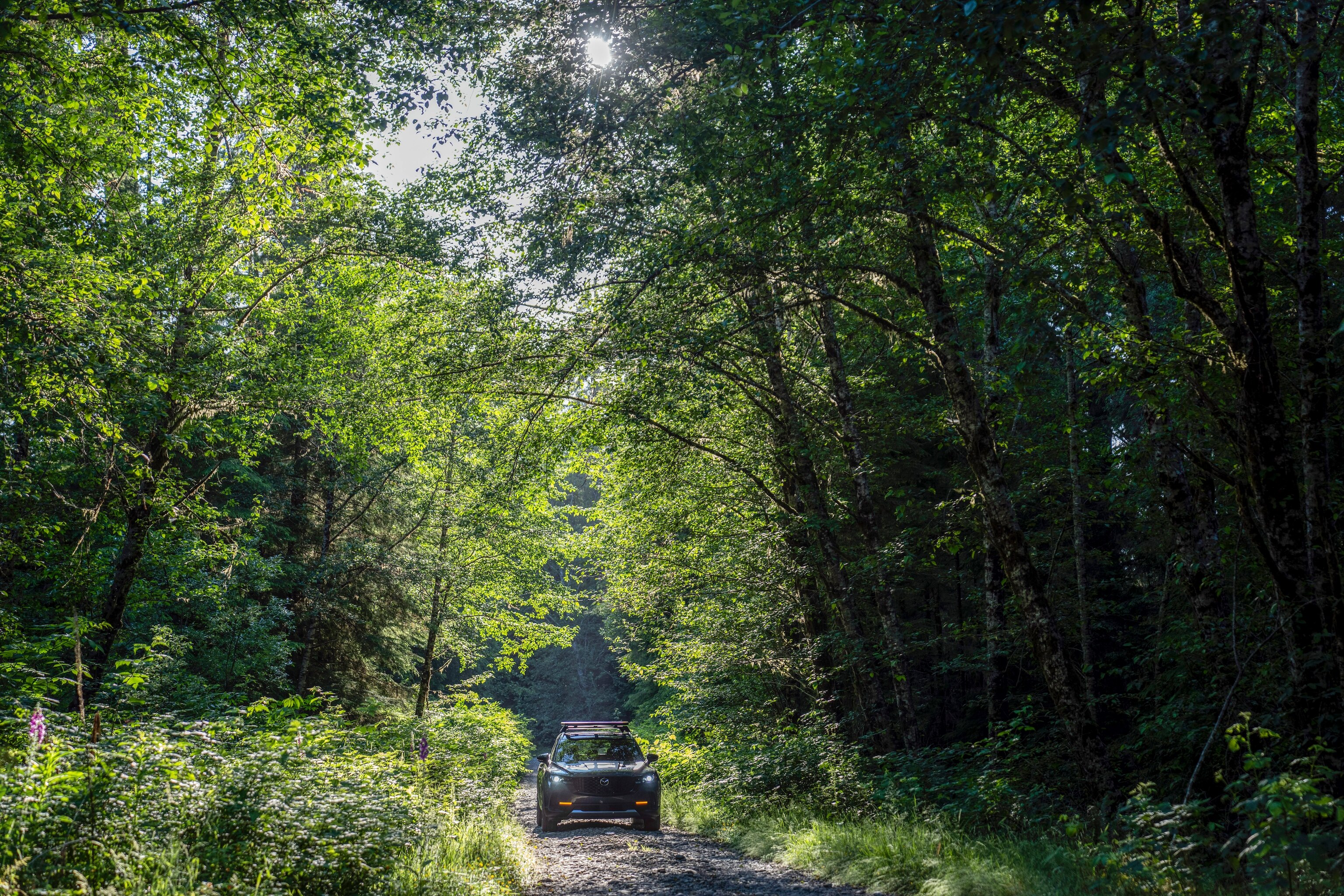

As they hike, King and Mafune come across a fallen tree that is at once decaying and sprouting new greenery. Mafune explains that the tree is called a nursery log. As fungal organisms break it down, the log provides a nutrient-rich home for other plants and trees to grow. King is awe-struck. “You can see the full circle here: life, but you can also see decay. Everything here seems to be working in harmony, everywhere I look,” she says.
King and Mafune continue walking and spot licorice fern and sorrel, a lemony-tasting herb, growing near their path. They stop to gather the ingredients, but King is eager to continue on in search of mushrooms.
They head back to the CX-50 to drive farther into the forest by way of a gravel road. On the road, King reflects on their journey so far. “I love the sense of balance you get as a person when you’re [in the forest]. You can feel the trees breathing. You can feel the whole ecosystem,” she says.
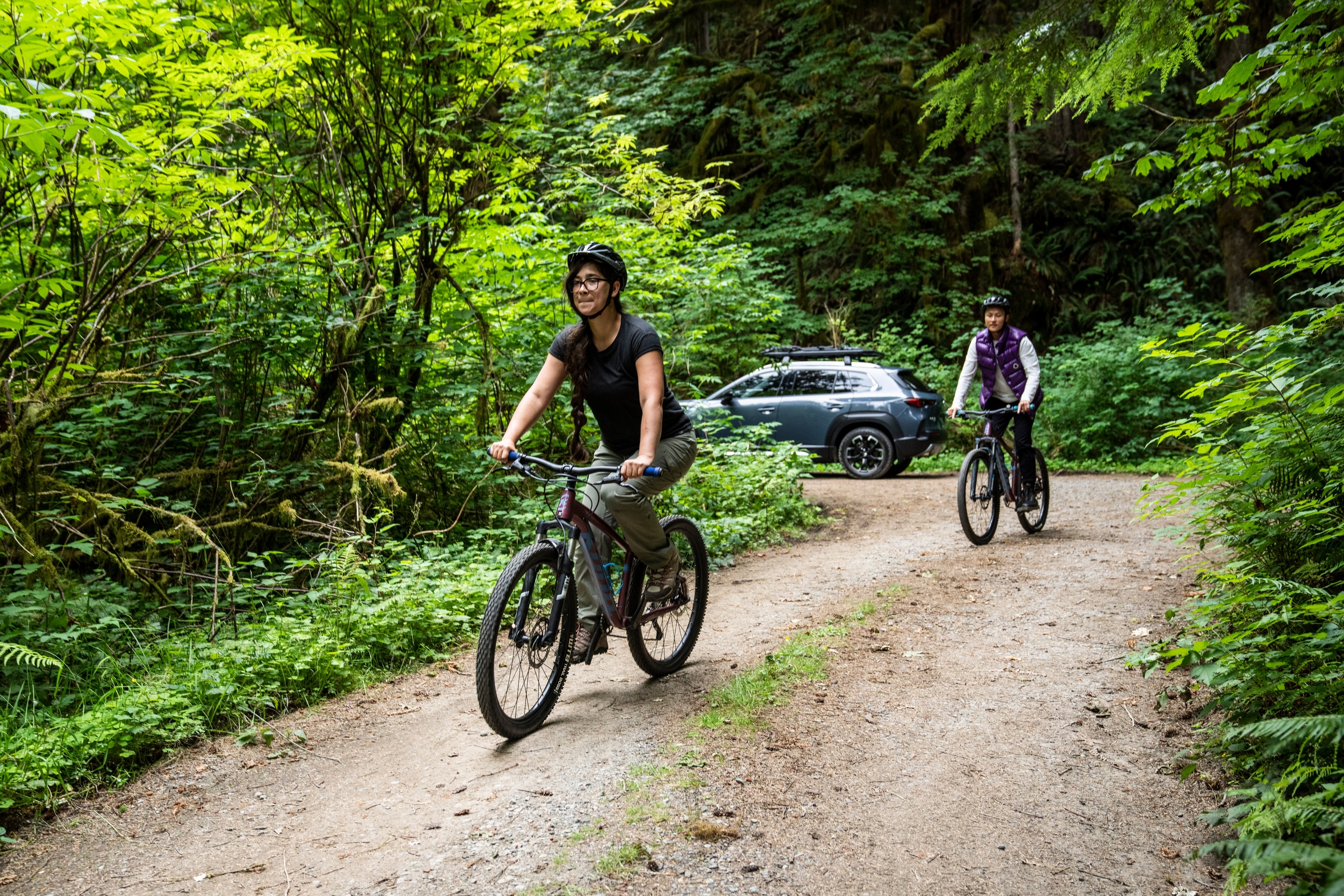
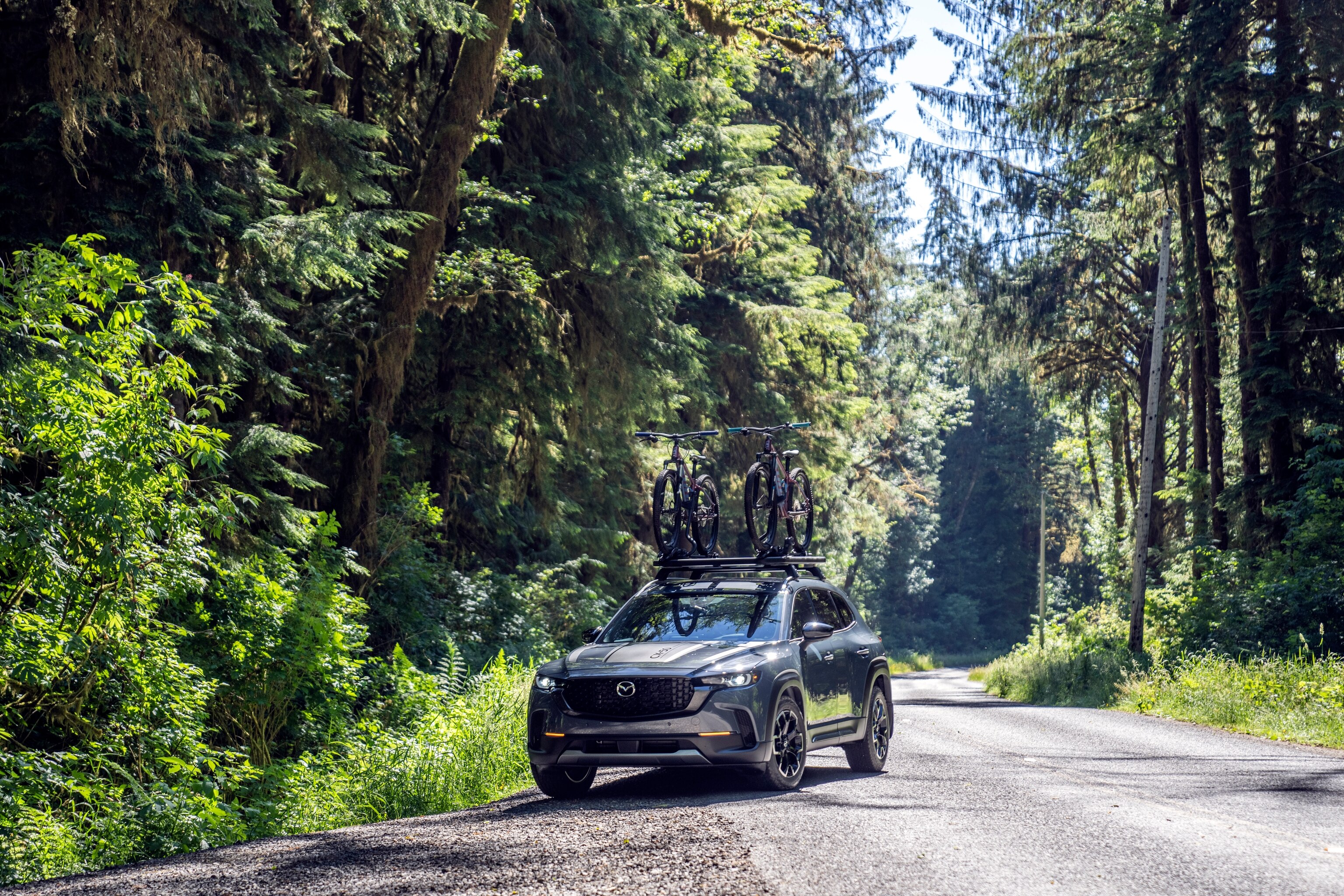
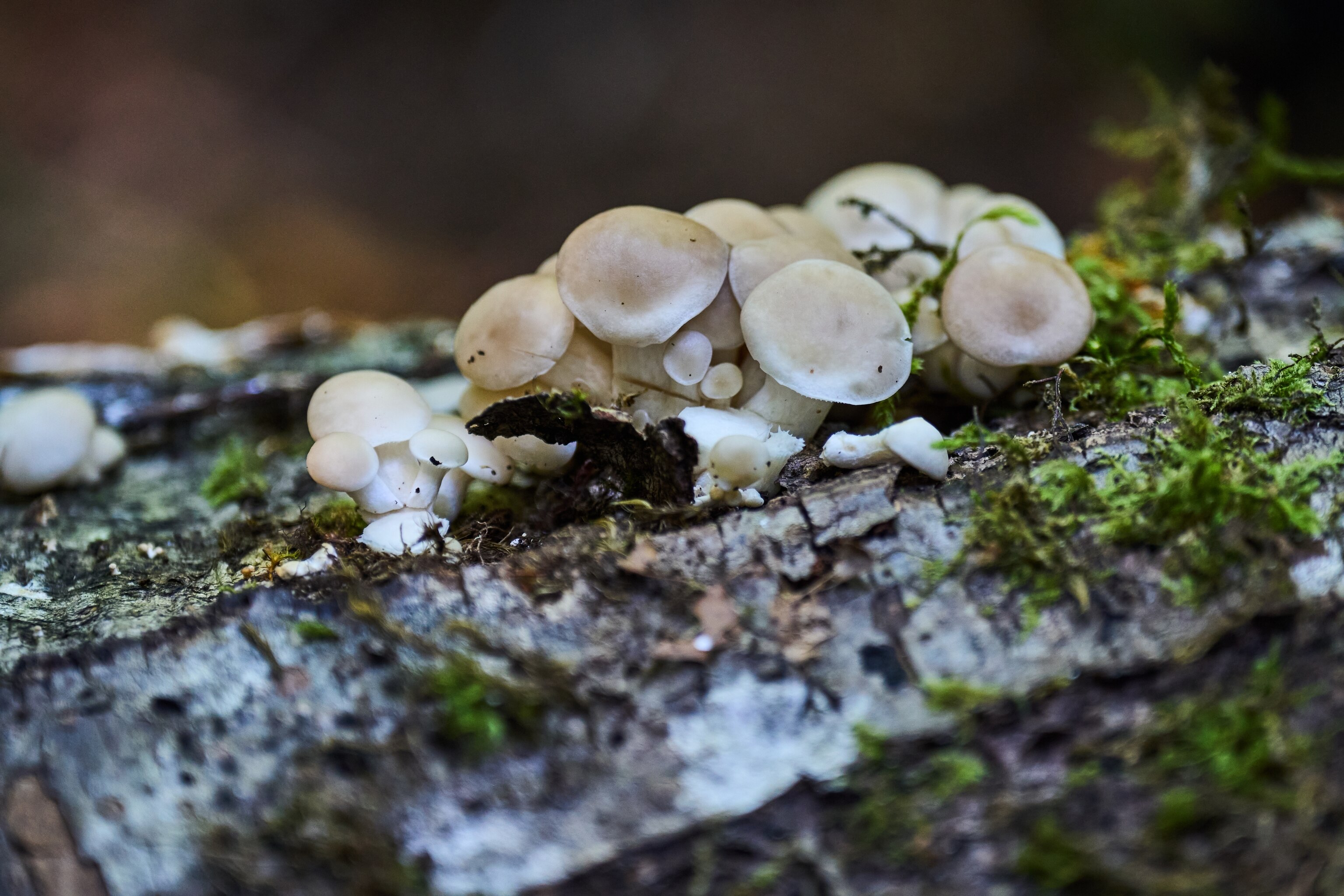
They park and grab mountain bikes off the CX-50’s roof rack bike carrier to ride deeper into the forest toward Merriman Creek. This time, they come across a nursery log with clusters of oyster mushrooms. Most are young, with small caps that have yet to expand, but several are ready to harvest. King takes out a pocket knife and cuts some mature mushrooms where the stems meet the log.
King and Mafune wade down the river in search of bigger specimens. They find mature oyster mushrooms the size of King’s palm and examine their thin, delicate ridges known as gills. As Mafune cuts them off the log, King is inspired to make congee, a rice porridge dish popular in Asian cultures.

Congee reminds King of her family and everything she’s seen in the old-growth forest. “For me, congee is like a warm hug. It makes you feel taken care of. Just the way that this forest [does]…. There are so many things all working in harmony, taking care of each other,” she says.
With a variety of oyster mushrooms as well as licorice fern and sorrel in hand, King is ready to cook.
King and Mafune head back to the CX-50 and drive to a secluded spot in the old-growth forest. They park, grab the mushrooms and other local ingredients from the trunk, and hike to a small clearing in the woods. King sets up a small propane stove and begins to prepare their meal. She sautés aromatics—onions, garlic, and ginger—and adds rice to the pan to toast it. Slowly, she pours in a broth made from mushroom stems and kombu, a seaweed often used to season soup.
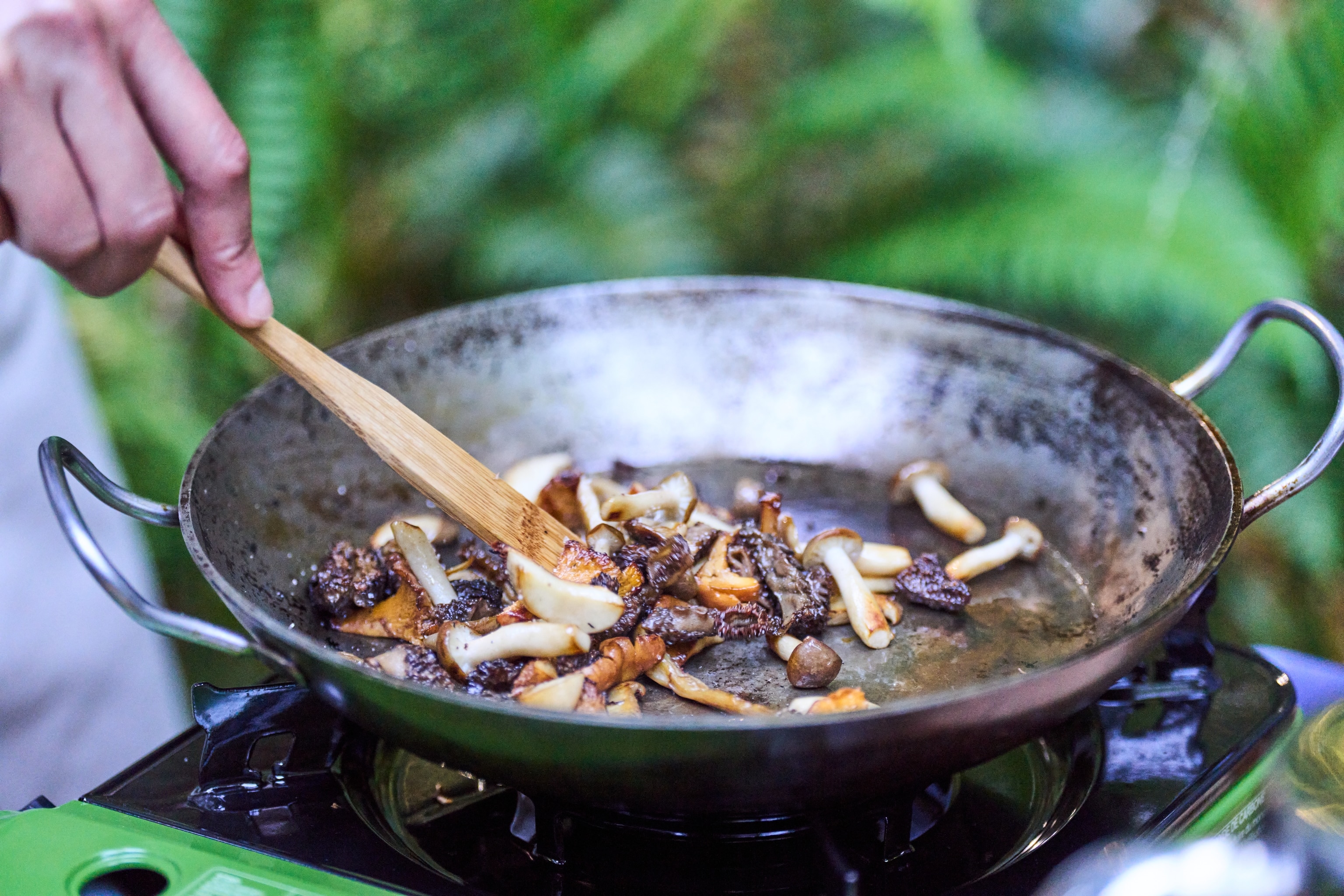
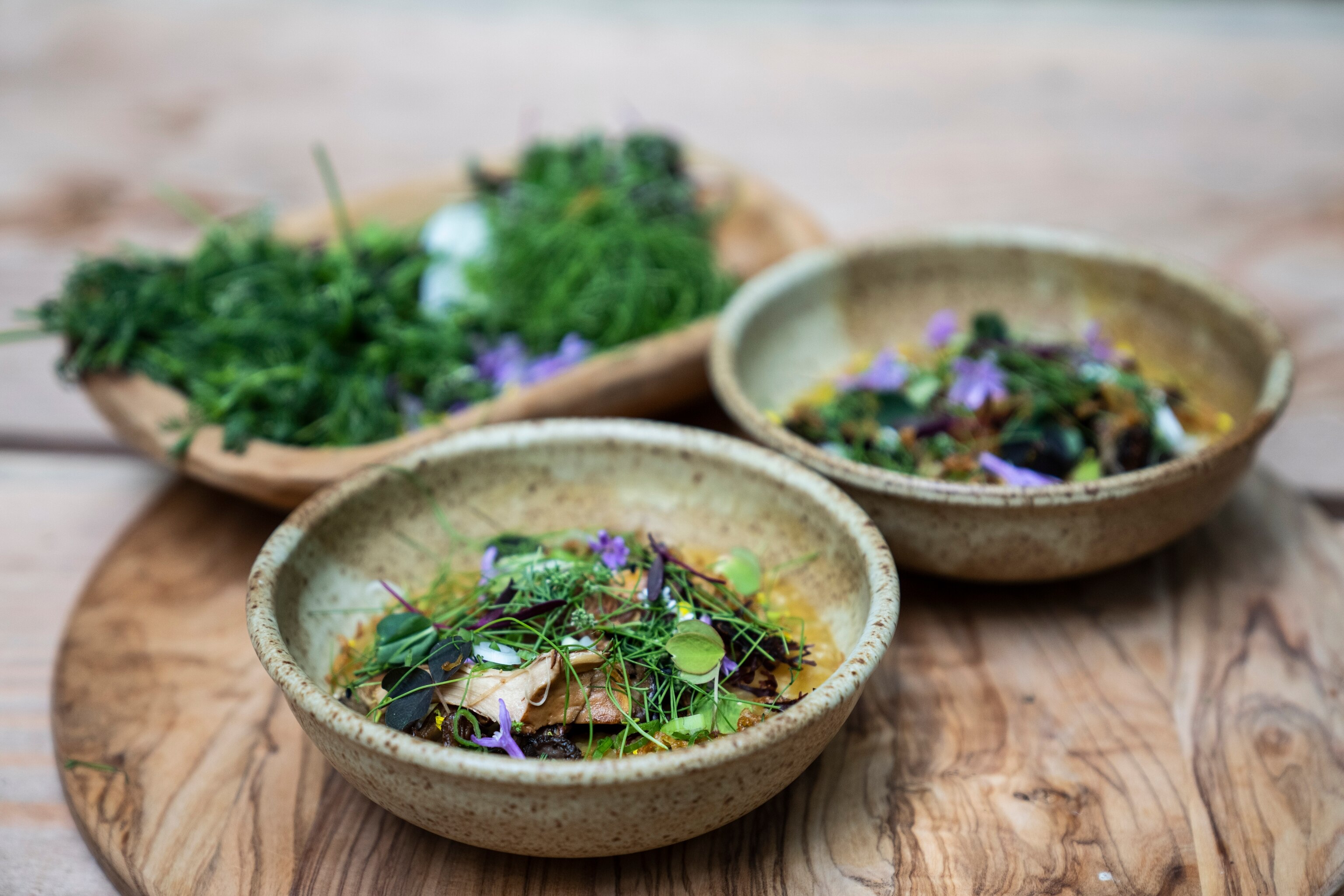
King chops and sears the oyster mushrooms she and Mafune gathered, along with some of her other favorite mushrooms: chanterelles, shiitakes, and morels. Each type has its own unique taste and texture.
King then spoons the rice into bowls and tops each with the caramelized mushrooms. She adds Pacific dulse seaweed (native to the Pacific Coast), fresh green onions, fried shallots, and the sorrel they gathered. “When it comes to making congee, at the end of the day, it’s about finding the balance between the softness of the rice and the textures from the garnishes... It’s about harmony,” she says.
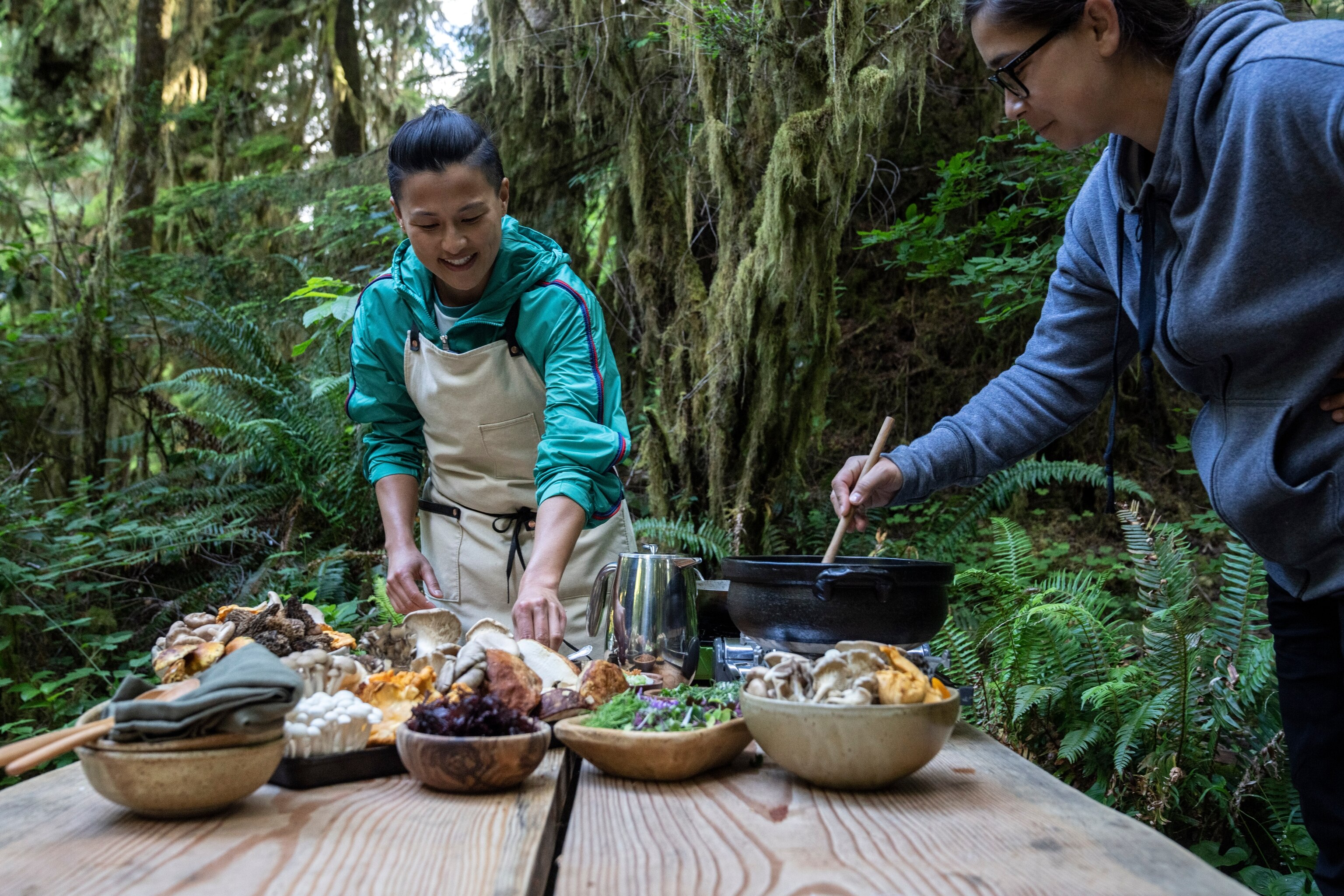
King hands a bowl to Mafune, and they sit down to enjoy their congee. King thanks Mafune for taking her on this journey and showing her the secrets of the old-growth forest. “To be cooking in this space, it’s beautiful. It inspires me to find balance and harmony as a chef and as a person. And I hope to take inspiration and be able to bring this special place to the food that I offer,” she says.
Watch the full episode and the entire Tasting Wild series on Hulu and National Geographic.